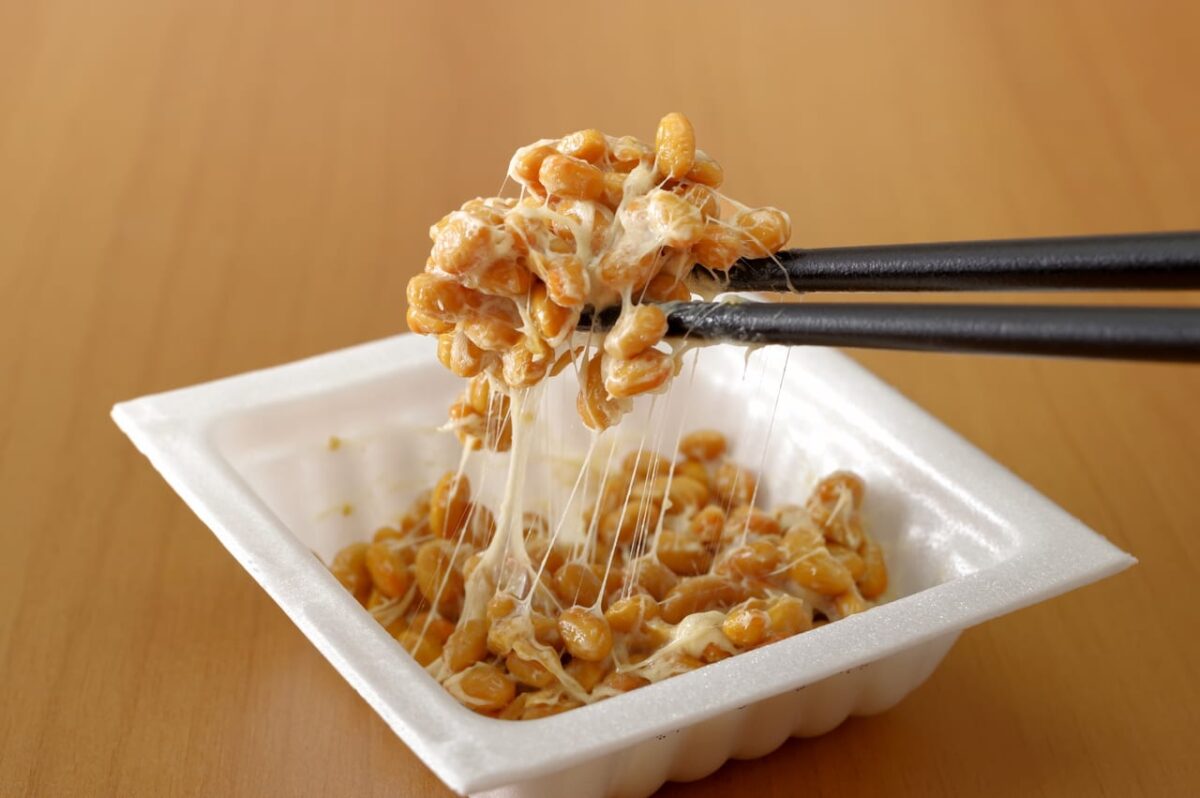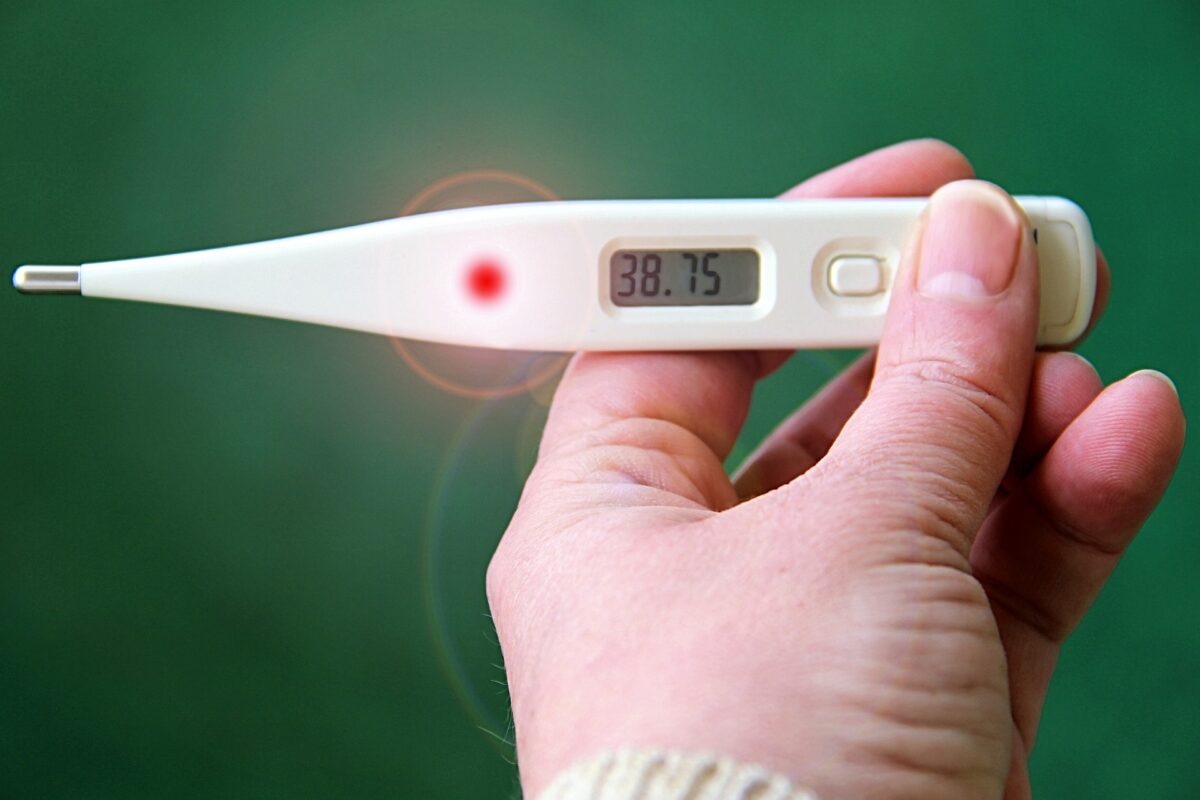Mouth breathing can seem like a small issue, but it can actually lead to a range of problems, from bad breath and difficulty sleeping to developmental issues in children. If you notice that your child is constantly breathing through their mouth, it’s important to take action. Here are 5 ways to combat mouth breathing in kids and ensure that your child is breathing properly.
1. Identify the Root Cause
The first step to combating mouth breathing is determining the root cause. Some common causes include allergies, enlarged tonsils or adenoids, or a deviated septum. Once you identify the cause, you can work with your child’s pediatrician to formulate a treatment plan. Treatment may involve medication, surgery or lifestyle changes like avoiding certain foods or environmental allergens.
Chronic nasal congestion may be a cause of mouth breathing in children. If structural and allergic causes have been ruled out, it may be a good idea to test for food sensitivities. Food sensitivities develop as a result of a slightly different immune response than allergies. A naturopathic doctor or functional medicine doctor can requisition a blood test that will identify any food sensitivities in your child. Sensitivities will often resolve after 3-months of abstinence at which time these foods may be re-introduced into the diet.
2. Practicing Breathing Exercises
Teaching kids proper breathing techniques can help them switch from mouth breathing to breathing through their nose. Encourage them to take long, deep breaths through their nose and exhale slowly through their mouth. You can also make it into a fun game by challenging them to see how long they can hold a deep breath in their nose or how long they can exhale.
A fantastic resource for nasal breathing exercises as well as some of the scientific literature around mouth breathing vs. nasal breathing can be found through the Buteyko Clinic
3. Promote Good Sleep Hygiene
Many kids breathe through their mouth while sleeping, so it’s crucial to establish good sleep hygiene to prevent mouth breathing before it starts. Make sure your child is sleeping on their back or side, as sleeping on the stomach can encourage mouth breathing. You may also consider using a humidifier, which can help to keep sinuses moisturized and reduce inflammation.
Here is a checklist for establishing good sleep hygiene in kids:
✅ Establish a consistent bedtime routine and consistent wake-up time every day.
✅ Avoid caffeinated drinks, large meals, and vigorous exercise late in the day.
✅ Create a calm, relaxing atmosphere in the bedroom by dimming lights and avoiding screens.
✅ Avoid napping during the day. If naps are necessary, keep them short (15-30 minutes) and at the same time each day.
✅ Keep bedroom temperature comfortable. A cool but not cold room of around 65 degrees is ideal for sleep.
✅ Make sure your child’s mattress is comfortable and supportive to ensure quality rest.
✅ Exercise regularly, although not too close to bedtime as this can make it harder to fall asleep quickly.
✅ Encourage your child to find activities that help them relax before bedtime such as reading or taking a warm bath or shower in preparation for sleep
4. Maintain Proper Oral Hygiene
Mouth breathing can cause dry mouth, which can lead to a range of oral health problems. Encourage your child to brush their teeth twice daily and to floss regularly to remove any debris that may have accumulated between their teeth. Also, make sure they stay hydrated so that their mouth stays moist and saliva can flow normally.
5. Be a Positive Role Model
Lastly, it’s important to lead by example. Kids are extremely observant, so if they see their parents breathing through their mouth, it can become normalized. Pay attention to your own breathing habits and make sure you practice good nasal breathing techniques in front of your kids. You can even lead by example by doing breathing exercises or attending yoga classes together.
Conclusion:
Mouth breathing may seem like a small issue, but it can lead to a range of problems for kids. By taking action early and addressing the root cause, you can help your child learn better breathing techniques and combat mouth breathing. Encouraging proper nasal breathing techniques, practicing good sleep hygiene, promoting oral health, and being a positive role model are all excellent strategies for combatting mouth breathing in children. If you’re worried about your child’s breathing habits, talk to their naturopath or pediatrician to determine the best course of action.
Over the past few years, there has been a lot of buzz around psilocybin, a psychedelic compound found in some types of mushrooms. Although the use of psychedelic mushrooms may be most often associated with recreational use, researchers are now starting to see the potential for therapeutic benefits. New studies have revealed that psilocybin can have a profound effect on our brains by altering the activity of something called the “default mode network.” Let’s take a closer look at how this works.
What Is The Default Mode Network?
The default mode network (DMN) is a set of brain regions that are active when we’re not actively engaged in any task or conversation. It’s responsible for helping us think about ourselves and our place in the world, which is why it’s sometimes referred to as our “internal dialogue.” It’s also important for forming memories and making decisions.
How Does Psilocybin Affect The DMN?
Recent research has found that psilocybin can significantly alter activity in the Default Mode Network (DMN), offering potential therapeutic benefits for a variety of conditions. In a study conducted at Imperial College London, researchers administered psilocybin to participants before having them complete cognitive tests. They found that those who had taken psilocybin showed improved performance on tasks related to creativity, problem-solving, and decision-making compared to those who had not taken it. This suggested that psilocybin could be useful for improving cognition and potentially even treating certain mental health conditions such as depression and anxiety.
In support of these findings, a subsequent study conducted by Johns Hopkins University School of Medicine uncovered similar results after they administered psilocybin to healthy volunteers. Participants were asked to complete a range of cognitive tasks designed to measure their memory, concentration, and attention span, before and after taking the drug. They found that those who took the psilocybin showed better performance across all three measures compared with their pre-ingestion baseline results.
Another recent study from the University of Zurich examined how different doses of psilocybin affect brain connectivity in people with depression. They used functional Magnetic Resonance Imaging (fMRI) scanning to monitor changes in brain activity associated with taking different doses of the drug. The researchers discovered that higher doses correlated with reduced connections between regions within the DMN, a key network involved in depression. Lower doses led to increased connectivity between regions outside the DMN. This suggests that taking different amounts of psilocybin could bring about varying effects on mood regulation and emotion processing depending on individual needs and current state of mental health.
The Effects Of Long-Term Use
The potential long term outcomes of augmenting the default mode network via use of psychedelics are numerous and varied. Perhaps most notably, research into this area suggests that regular and repeated use of psychedelics may result in improved cognitive functioning as well as higher levels of creativity. In particular, studies suggest that individuals who utilize psychedelics on a regular basis display improved attentional capacity, greater cognitive flexibility, increased working memory, enhanced insightfulness, and even improved mood regulation. Psychedelic-induced neuroplasticity has been linked to a variety of positive psychological changes including increased openness to experience, greater sense of well-being, and improved self-efficacy.
Moreover, recent studies have also suggested that long term use of psychedelics may confer protective effects against certain mental health disorders such as depression and anxiety. In particular, research has indicated that regular users possess elevated levels of serotonin receptor binding and fewer signs of depression than those without prior exposure to psychedelic substances. Similarly, individuals who regularly engage with psychedelics also show reduced rates of anxiety due to the drug’s ability to induce feelings of safety and security.
Additionally, scientists have theorized that sustained use may potentially lead to more lasting structural changes within the brain such as altered neuronal connections or increases in dendritic spine density. These changes could further reduce vulnerability to mental health issues over time.
Overall then it appears that the potential long term outcomes of augmenting the default mode network via use of psychedelics are highly promising; not only do they promise improvements in various aspects related to cognition but they also appear to confer neuroprotective benefits which could help ameliorate various mental health disorders over time. It must be noted, however, that much more research needs to be done in this area before any definitive conclusions can be drawn regarding these potential long term impacts.
Conclusion
The research between psilocybin and the Default Mode Network is providing strong evidence that psilocybin has a significant potential to be used as an effective treatment for mental health and neuroplasticity. The connectivity of the DMN to areas of the brain related to emotional processing, memory, and self-referential thought suggest that psilocybin could lead to more positive outcomes in areas mental health and neuroplasticity.
Additionally, studies have shown that psilocybin can decrease activity in the DMN, leading to potentially decreased symptoms of depression and anxiety. Many researchers are now beginning to look into how this form of treatment might be integrated into traditional psychotherapeutic approaches. With all these promising findings, it’s likely that more research will continue on this topic with even more promising outcomes related to mental health neuroplasticity.
Have you heard of natto? It’s a fermented soybean paste that’s popular in Japan, and it’s gaining popularity around the world as more people discover its incredible health benefits. In this blog post, we will explore five of these benefits and discuss why adding nato to your diet could have a positive impact on your health.
1. Rich in Probiotics
Natto is naturally rich in probiotics, which are beneficial bacteria that can help improve your digestive health. Probiotics can help keep the population of “good” bacteria in your gut balanced so that you can better absorb nutrients from food and fight off harmful bacteria. They can also help reduce bloating, gas, and constipation.
2. High in Protein
Natto is a great source of protein. One tablespoon contains two grams of protein. This makes it an excellent addition to any vegetarian or vegan diet, as well as for those looking to add more plant-based proteins into their daily meals.
3. Full of Vitamins, Minerals and Nattokinase
Natto is packed with vitamins and minerals like Vitamin B12, zinc, magnesium, iron, potassium, phosphorus, and calcium. Additionally, natto has been found to be high in antioxidants which can help protect against free radical damage caused by environmental factors like pollution or UV rays from sunlight.
Natto is also a great source of nattokinase, an enzyme with a variety of health benefits. This enzyme has been studied for its potential to lower blood pressure, reduce inflammation, and improve circulation. Studies have shown that it may help prevent cardiovascular diseases like stroke and heart attack as well as metabolic disorders such as diabetes.
Additionally, nattokinase has been found to have anti-cancer properties and can help boost the immune system. It can also be helpful in improving digestion by breaking down proteins and carbohydrates into smaller molecules more easily absorbed by the body.
Furthermore, nattokinase has been investigated for its ability to break down fibrin, a protein involved in clot formation, which could potentially help reduce the risk of deep vein thrombosis and other dangerous blood clots. On top of all these health benefits, scientists believe that nattokinase may even reduce the risk of developing Alzheimer’s disease due to its ability to fight against oxidative stress and inflammation in the brain. All these findings reflect why natto is such an important part of traditional Japanese cuisine today.
4. Boosts Immunity
The probiotic content of natto helps boost immunity by helping strengthen the body’s natural defense system against infections and illnesses caused by bacteria or viruses. Additionally, the Vitamin C content helps support cell growth and repair while also fighting off infection-causing microbes.
5. Improves Heart Health
Natto is low in saturated fat but high in unsaturated fats which can help improve heart health by lowering cholesterol levels and reducing inflammation throughout the body.
How to eat Natto?
Check out this youtube video on how to enjoy the most common preparation of nato. You can usually find these packs in your local asian food market. Best ways to eat Natto
Natto recipes
Check out these great recipes to get you started with these incredible superfood. HOW TO EAT NATTO (9 EASY NATTO RECIPES AND 30 MORE IDEAS)
Conclusion
All in all, adding nato to your diet has numerous health benefits, from boosting immunity to improving heart health. All these benefits make it worth considering as part of a healthy lifestyle routine!
Have you ever heard of Shilajit? If not, don’t worry you’re not alone. For centuries, this rock-like substance has been used for its purported health benefits in the Indian subcontinent and surrounding regions. But what exactly is this mysterious stuff? In this blog post, we’ll answer that question and discuss some of the potential health benefits of Shilajit.
What is Shilajit?
Shilajit is a tar-like substance found in the mountains of the Himalayas and other mountainous regions. It is made up of organic plant matter that has been compressed over many years by layers of rock and ice. This dark brown or blackish material can be scraped off rocks in its raw form or purchased as a powder, liquid extract, or capsule supplement.
Shilajit has long been used in Ayurvedic medicine for its purported health benefits, including increased energy levels and enhanced physical performance. The active ingredients are believed to include minerals like iron, zinc, magnesium, and copper; humic substances like fulvic acid; antioxidants; amino acids; vitamins; enzymes; and other phytonutrients.
Potential Health Benefits of Shilajit
Shilajit has traditionally been used to treat a wide range of ailments including diabetes, fatigue, weak bones, low libido, digestive issues, high cholesterol levels, and even depression. While more research needs to be done to confirm these potential health benefits, preliminary findings have suggested that it may indeed be beneficial for certain conditions such as type 2 diabetes and chronic fatigue syndrome (CFS). In addition to providing energy-boosting effects due to its high mineral content, shilajit may also help reduce inflammation and increase immunity due to its antioxidant content. Let’s take a closer look at some of the clinical research.
Recent clinical studies have shown that shilajit may be useful in treating a variety of health conditions. For instance, in a study published in the Journal of Traditional and Complementary Medicine in 2018, researchers found that daily ingestion of shilajit for 12 weeks reduced levels of fasting blood sugar, hemoglobin A1C, and urinary albumin-to-creatinine ratio in patients with type 2 diabetes.
Similarly, another investigation reported in the International Journal of Endocrinology and Metabolism revealed that supplementing with shilajit for 8 weeks improved insulin sensitivity and blood sugar control among CFS patients.
Furthermore, research published in the journal Biochemical and Biophysical Research Communications suggests that shilajit has anti-inflammatory properties due to its antioxidant content. Specifically, one study found that it reduced oxidative stress markers such as malondialdehyde (MDA), glutathione (GSH) and superoxide dismutase (SOD). These findings are consistent with other reports indicating that shilajit may help reduce inflammation by scavenging harmful free radicals from the body.
The mineral content of shilajit may also contribute to its beneficial effects on health. For example, a study published in Evidence Based Complementary & Alternative Medicine showed that supplementation with this substance increased total cholesterol levels while decreasing triglycerides and low-density lipoprotein cholesterol (LDL-C) concentrations among healthy adults. Other investigations have revealed that it may promote better bone health by increasing calcium absorption from food or supplements. Finally, some experts claim that regular consumption of this substance can help boost energy levels by improving mitochondrial function and cellular respiration processes.
Potential Risks
Shilajit can be a great supplement due to its potential benefits, however, there are certain risks and cautions that should be taken into consideration.
For starters, it is important to note that shilajit is not regulated by the FDA and could contain heavy metals such as lead and arsenic if not properly sourced. This is especially true for shilajit products coming from outside of the United States. It is also important to consult with a doctor before using shilajit, especially if you are pregnant or breastfeeding.
Additionally, people with existing medical conditions like diabetes or high blood pressure should use caution when taking shilajit due to possible interactions with medications they may already be taking.
As with any supplement or herb, it is important to take the recommended dosage in order to avoid any side effects such as nausea, headaches, heartburn and stomach upset. Lastly, because of its detoxifying properties and effect on metabolism, people who are sensitive to change in their diet might want to start slow when first taking shilajit in order to give their bodies time to adjust. Taking all of these factors into account can help ensure the safe use of shilajit and maximize its potential health benefits.
Conclusion
In short, Shilajit is an enigmatic rock-like substance found in mountain regions around the world with a long history of being used in traditional medicine for its purported health benefits. While more research needs to be done before any definitive conclusions can be drawn about its effectiveness as a treatment option for various ailments—including diabetes and CFS—preliminary findings suggest that shilajit may indeed provide useful energy-boosting effects due to its high mineral content as well as anti-inflammatory properties due to its antioxidant content. Ultimately though it’s always important to consult your doctor before taking any new supplements! With that being said—we hope you learned something new about shilajit today!
Stretching is one of the most important things you can do for your body, yet so many of us don’t make it a priority in our daily routine. Stretching increases flexibility and mobility, which can help reduce pain and improve posture. But there are even more benefits to stretching every day. Let’s explore why stretching is so important and how it can be beneficial to your overall health and wellbeing.
Stretching Increases Flexibility
The most well-known benefit of stretching is that it increases flexibility. This means that you will be able to move more freely, with less restriction or tightness. Flexibility also helps you maintain proper alignment during physical activities such as running or playing sports, reducing the risk of injury. Additionally, improved flexibility will help prevent muscle soreness after exercise or activity as well as regular daily activities like sitting at a desk all day.
A recent study from the ACSM’s Health & Fitness Journal found that regular stretching (defined as two to three sessions per week of around 10 minutes each) led to significant improvements in hip, shoulder and hamstring flexibility over a period of 12 weeks (1). Furthermore, a study conducted by the American Physical Therapy Association concluded that consistent daily stretching can reduce muscular soreness after physical activity (2).
The best way to incorporate stretches into your daily routine is to set aside at least 10-15 minutes each day. Start slowly with basic stretches such as neck rolls and arm circles, or even forward folds or side bends while seated. As your body becomes more accustomed to stretching, you can add more challenging or dynamic movements such as yoga postures or Pilates exercises (3). Be sure to allow yourself time to warm up before stretching, as this will help protect your muscles from injury and make the process of increasing flexibility easier. Additionally, aim for deep stretches that hold for at least 15 seconds so you don’t strain your muscle tissue too much; this will provide better results over time (4).
Stretching Reduces Stress
Stretching not only helps physically but mentally as well! Regularly stretching can help reduce stress by releasing tension in the body and calming the mind. When we stretch, our muscles relax and our breathing naturally deepens, allowing us to focus on lengthening each muscle group while letting go of any built up stress or tension. Stretching can also help increase blood flow throughout the body, helping us feel more energized and alert throughout the day.
Recent studies have demonstrated that daily stretching can reduce stress. According to a study conducted by researchers at the University of Tokyo, stretching for just 10 minutes per day reduced cortisol levels in participants. Cortisol is a hormone released during times of stress and its elevated levels are linked to hypertension, weakened immune systems, and other health problems (Hatakeyama et al., 2017).
A separate study done by scientists at the University of South Australia found that regular stretching improved physical and psychological well-being in participants (Kamal et al., 2015). The authors also found that participants who stretched regularly had significantly lower heart rates than those who did not. Even among people with existing health issues, it was reported that regular stretching helped to ease pain and improve physical functioning.
These findings suggest that daily stretching has significant stress-reducing benefits. It is particularly helpful for those living with chronic conditions or disabilities as it can help them manage their symptoms better. Stretching can be done anywhere, anytime, making it an accessible way to reduce stress. Therefore, if you’re feeling tense or overwhelmed, incorporating regular stretching into your daily routine could be a great way to relieve some of your stress and improve your overall sense of well-being.
Improved Posture
Poor posture is one of the main causes of neck and back pain, yet something we often overlook when trying to prevent aches and pains from developing in our bodies. Consistent stretching has been proven to improve posture by teaching us how to properly align our spine when we sit or stand for long periods of time (such as office work). Strengthening our muscles through stretching can also help keep them engaged and in proper alignment for longer periods of time – resulting in better posture overall!
Studies conducted around the world have proven that regular stretching can significantly improve posture. For example, one study published in 2017 in the Journal of Physical Therapy Science examined the effects of stretching on the improvement of posture among female students. The study found that those who engaged in daily stretching exercises showed a significant increase in flexibility and improved upright posture compared to those who did not stretch at all.
Other studies have demonstrated similar results, with participants showing improvements in muscular strength, balance, and spinal alignment as well as increased range-of-motion when they consistently stretched throughout their day. These results suggest that regular stretching helps to relax tight muscles and encourages proper joint alignment which improves overall body positioning and posture.
Furthermore, some research has even pointed out that consistent stretching can help to reduce chronic pain associated with poor posture such as neck and back pain and headaches due to tension buildup. Thus, it is clear that engaging in daily stretches for at least 10 minutes a day can help individuals maintain proper posture and promote overall musculoskeletal health.
Conclusion
It’s easy to see why incorporating regular stretching into your daily routine is essential for both physical and mental wellbeing! Not only does it increase flexibility, reduce stress levels, and improve posture; but it also helps boost energy levels throughout the day so that you always feel ready to take on whatever life throws your way! So next time you’re feeling stressed out or sore after a long day, try taking a few minutes out of your day to do some basic stretches – it could make all the difference!
References:
(1) ACSM’s Health & Fitness Journal: https://journals.lww.com/acsm-healthfitness/Fulltext/2016/05000/The_Effects_of_Stretching_on_Performance–A_Systematic.9.aspx
(2) American Physical Therapy Association: http://www.apta.org/PWNF/
(3) Harvard Health Publishing: https://www.health.harvard.edu/staying-healthy/the-importance-of-stretching
(4) Mayo Clinic: https://www.mayoclinic.org/healthy-lifestyle/adult-health/in-depth/stretching/art-20047931












